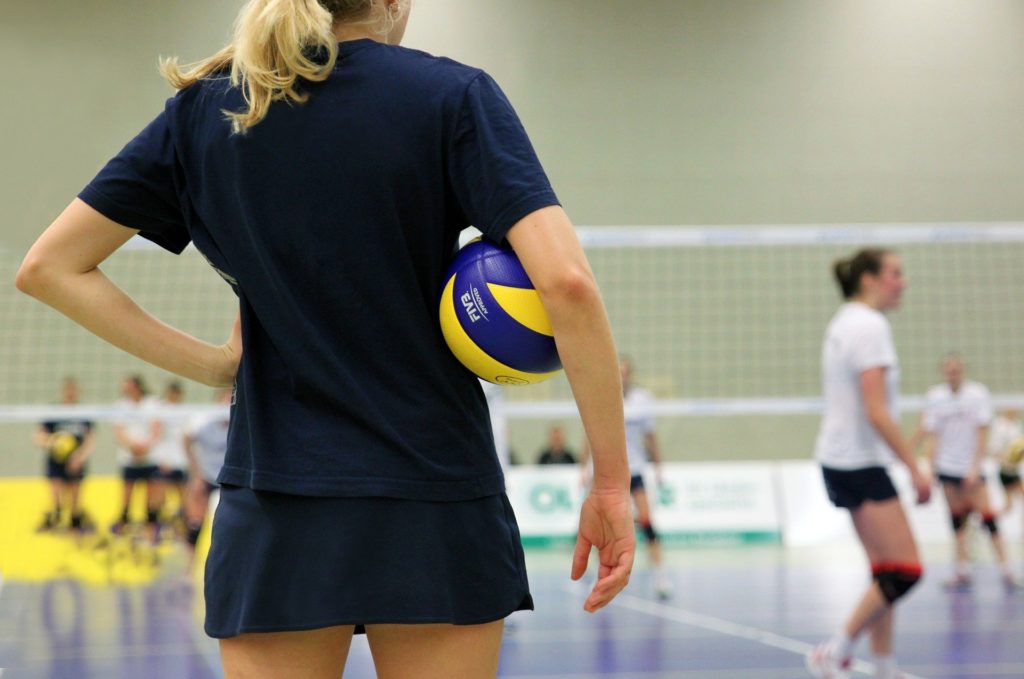This post was originally published on June 19, 2020. It was updated on July 1, 2020.
This is part two of a three-part mini-series called “Scholarships and College Funding for the Student-Athlete,” which will give information on the resources and steps for attaining college athletic scholarships from the perspective of a young athlete, a collegiate coach, and a professional athletic advisor.
Read Part 1: College Athletic Scholarship Basics
Read Part 3: Preparing for a College Athletic Career: The Mental Game
After our previous post, you now plan to or already have registered on the eligibility websites, updated your stats and test scores, and hopefully narrowed down where you’d like to compete in your sport.
But how do you get noticed? And how does a sports program decide on scholarships? And since you’re incredibly athletic and talented, which sport should you play to get the MOST money?
Scholarship Odds Spotlight
Let’s get a framework for answering these questions by looking at a few statistics (thanks to scholarshipstats.com):
- There are over 7 million high school sports participants in the United States, of which only 6-7% compete at the next level (not including foreign high school athletes).
- Of the collegiate competitors, around 29% compete in the NCAA Division III (which provides no athletic scholarships), 25-27% in NCAA DI, 18% in NCAA DII, 16-17% in Junior College, and 11% in NAIA.
- Average athletic scholarship size ranges from over $16,000 for NCAA DI to around $1,750 for Junior Colleges.
So, it would seem that the odds of you earning some level of athletic scholarship is a little over 4%. And that number doesn’t account for the high school athletes that don’t try to compete at the next level.
How to Increase Your Odds of Obtaining a Scholarship
But how could you increase those odds even more? Consider these ideas and analyses:
- Play a scholarship sport that has a higher chance of you competing.
- For BOYS: Football has one of the highest percentages of NCAA scholarship participants who transitioned from high school (4.8%), while Ice Hockey & Lacrosse have the highest (over 5.4%); Basketball and Wrestling have the lowest transition rate (2% or lower).
- For GIRLS: Nine sports have a high school to collegiate transition rate of over 4.3%; Ice Hockey and Lacrosse lead the pack at 10% and 6.3%, respectively.

- Compete in High School AND Club.
- According to the NCAA, over 60% of collegiate athletes competed on high school AND club teams, with only 17% of girls and 29% of boys competing in high school only.
- The large majority of non-club competitors came from Track & Field, Football, Tennis, and Golf.
- It is possible to compete collegiately if you have neither competed in high school nor club: 49% of Women’s Rowing, 10% of Men’s Swimming.
- Consider “residual sports” and sports that need to fill a roster.
- Some of you may be talented enough to compete in two different sports, but if you aren’t, think of your skills that could apply to another sport.
- For example, you might be fast on the football field, which could translate easily to the track; or you can easily jump up to hit a volleyball, perhaps High Jump is also your thing? Maybe you have developed considerable endurance but never competed in any organized sport; ever heard of rowing?
- If a football player is also open to competing in Track & Field, he increases his scholarship pool by nearly 22%.
- Live in the Southeast.
- We’re kidding. You don’t have to move. But a high concentration of college recruits come from the Southeastern United States.
While you may not be able to choose where you’re from, how you were made, or learn how to ice skate before college, you can start planning how to get recruited in your chosen sports. But rather than us telling you how to get noticed by a coach, we decided to interview an actual NCAA Division I coach to give you firsthand knowledge of what to do.

What Do the Experts Say? Advice from A NCAA Head Coach
Steve Rainbolt is the Director of Track & Field and Cross Country at Wichita State University in Wichita, KS in his 20th season as head coach. A former All-American decathlete and Olympic Trials qualifier, “Bolt” has coached 72 NCAA All-Americans and 33 conference championship teams. (You can see more of his accolades here). Over a 37-year coaching career, Bolt considers himself “essentially an expert on all things athletic scholarships.” So, listen up!
When should you try to get noticed as a young athlete?
“Different sports have different timelines,” Bolt says. “For example, you may have regular commitments from 9th and 10th graders for Softball (where coaches can talk to club coaches), while Track & Field coaches can call you as a junior or senior in high school. But I would recommend thinking about it in 9th grade especially if your grades are average.”
This means you need to be mindful of your ACT/SAT scores, GPA, and achieve your core credits.
Other than being extremely good at your sport, how can you get noticed by college coaches?
Since there are some recruiting restrictions on coaches reaching out to athletes, Bolt advises the following: “Athletes can make coaches aware of them through direct email or social media. Send multiple emails to a coach! Go to camps! Be outgoing! Introduce yourself in some way to get on their radar.” Too often, Coach Bolt has had to say, “I would’ve loved to recruit your kid, but wasn’t ever aware of them.”
The truth is, coaches are already spread thin trying to recruit and coach many different athletes all over the country (and the world!). You can easily rise to the top of the recruiting pile by more than just athletic ability. Communication is key.
Scholarship distribution: headcount vs equivalency sports
Let’s talk through scholarship limits for a minute, as it applies to a coach like Rainbolt.
For scholarship purposes, Track & Field and Cross Country are combined. At the NCAA Division I level, there are 18 scholarships available for women and 12.6 for men.
But what is a .6 scholarship? Aren’t all scholarships full rides?
“The NCAA has what they call ‘headcount’ and ‘equivalency’ scholarships. Headcount sports require full scholarships to be given to a limited amount of athletes,” Bolt says.

To illustrate the difference: 15 full scholarships may be provided to a men’s basketball team; anyone else on the team that exceeds that number is required to be a walk-on. Headcount sports in NCAA Division I include Men’s Basketball & Football; Women’s Basketball, Tennis, Gymnastics, and Volleyball.
“An equivalency sport (like Track & Field) is allowed to split up those ‘full’ scholarships among any number of athletes. Roughly 80% of the 60 men on WSU’s track roster are scholarship athletes,” he says. “And a sport like track and field—which is based on time, distance, or points—makes it a bit easier to decide how to distribute partial scholarships.”
Rainbolt gives the example of Aliphine Tuliamiuk, the recent winner of the 2020 Olympic Trials marathon and former Wichita State runner, who wasn’t on full scholarship when she competed in college.
Why Academics Are So Important in the Recruiting Process
But what else are coaches looking for? And what else should you focus on while you sharpen your skills athletically?
If you recall the piece of advice we gave in our last post, “One of the best things for a prospective college athlete to do in high school is to focus on academics.” You probably rolled your eyes and thought “duh!” But Coach Rainbolt tells us why it’s so important in calculating and granting scholarship amounts:
“The NCAA uses a term called ‘Academic Honor’, which specifies that if you receive other university scholarships [beyond athletics] you need to maintain a high school GPA of 3.5 or higher (or top 10% of class; or 27+ on the ACT) for your university aid to not count toward athletic scholarship limits; then maintain at least a 3.0 GPA in college.”
Grades, credit hours, scholarship money, and target/regional recruiting
A little confusing right? Here’s an example.
An athlete is awarded a $12K scholarship from the soccer team and $6K from the university, but because her “Academic Honor” dropped below the required limits, the soccer team must count all $18K towards their awarded scholarship money, even though they only designated $12K.
Keep in mind that these limits may not apply to headcount sports. And any Pell Grants do not count towards this calculation.

Another calculation coaches may use for scholarship money is based on the academic credit hours you are enrolled in. “Typically, coaches can give out 24 credits per year (12 hours per semester) plus $700/month for Room & Board,” Bolt states.
Coaches can spread more scholarship dollars between athletes if athletes take a “lighter” academic workload. One way to do this and still graduate on time is to get more college concurrent credit in high school before you graduate.
Additionally, many coaches may focus their recruiting efforts across state lines if the university has tuition discounts or tuition reciprocity programs (see our post about these programs here). Rather than having to give more dollars to an out-of-state athlete with a similar performance record, coaches can recruit talent for the same scholarship amounts they would use for someone in-state.
Action Items as a Potential College Athlete
Now that you have a sense of what coaches might be looking for, here are some key action items for the athletes out there:
- BROADEN YOUR HORIZONS: Identify more than one potential sport you could compete in at the next level. Track & Field? Rowing? Ice Hockey?
- JOIN THE CLUB: If you haven’t already, join a club team for your main sport to increase your potential for recruitment.
- DON’T BE SHY! Introduce yourself to college coaches through email, social media, and sports camps. This gets you on their radar.
- STUDY UP: Keep your grades and test scores as high as you can. It’s much easier for a coach to grant scholarships to well-read student-athletes.
- CROSS THE LINE: The state-line, that is. Look for out-of-state schools with tuition reciprocity or tuition discount programs for out-of-state students.
There you have it. The next steps of your collegiate athletic career are that much closer (I’m holding my fingers close together right now).
But how do you put it all together? And how do you make sure you stay on track?
Read the third and final post in this series: Preparing for a College Athletic Career: The Mental Game.
Make it a great day!
Athlete or not, the cost of higher education is a daunting proposition. The College Funding Coach has got you covered! To learn more about saving and paying for college, register for one of our free educational webinars below or schedule a free consultation with one of our coaches!
![]() ——————————————————————————————————————————————————————
——————————————————————————————————————————————————————
Author:
Related Reading

